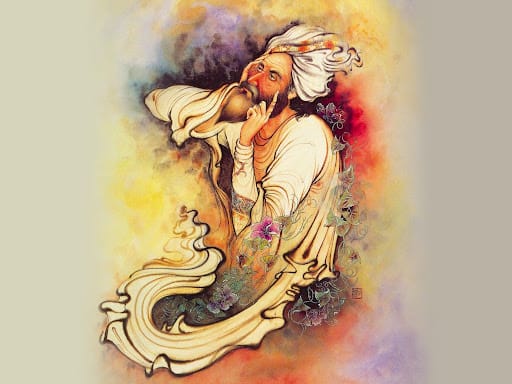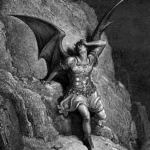Get ready to explore the fascinating intersection of Jewish mysticism and Sufi spirituality! This article dives into the rich history, core principles, and modern relevance of Judeo-Sufi thought, revealing a unique blend of ancient wisdom and mystical practices.
Where Jewish Mysticism Meets Sufi Spirituality
Judeo-Sufi traditions represent a captivating fusion of Jewish and Sufi Muslim thought, transcending traditional religious boundaries. This spiritual path weaves together elements of Jewish mysticism with the heart of Sufi spirituality. From medieval Spain to modern-day synagogues, echoes of Judeo-Sufi influences can still be found in the ways some Jewish communities connect with the Divine.
Shaping Judeo-Sufi Thought: Key Figures and Their Contributions
Several influential figures have shaped the bridge between Jewish and Sufi traditions:
- Rabbi Bahya ibn Paqudah (11th century): His seminal work, “Duties of the Heart,” emphasizes inner piety and cultivating a deep connection with God.
- Moses and Ovadya Maimonides (12th century): This father-son duo, known for “Guide for the Perplexed” and “Treatise on the Pool” respectively, seamlessly integrated Sufi concepts of divine love and contemplation into Jewish philosophical thought.
- Abraham Abulafia (13th Century): A mystic who developed ecstatic Kabbalah, drawing inspiration from Sufi practices like meditation and the chanting of divine names, demonstrating the potential for mutual enrichment between these traditions.
Exploring the Core Themes
Judeo-Sufi thought is characterized by several unique themes:
- Divine Love and Unity: The experience of God’s boundless love is paramount in Judeo-Sufi thought. It emphasizes dissolving the ego and recognizing our interconnectedness with the Divine.
- Spiritual Practices: This tradition goes beyond intellectual concepts to embrace practices. It beautifully interweaves Jewish law with Sufi-inspired practices like meditation, chanting, and spiritual retreats as pathways to connect with the Divine.
- The Power of Music: Music serves as a powerful bridge between these traditions. “Azkir Hasde El,” still practiced in Istanbul’s synagogues, exemplifies the harmonious fusion of Jewish and Sufi musical traditions.
Judeo-Sufi Thought in the Modern World: A Resurgence of Interest
- Renewed Sense of Wonder: Scholars and spiritual seekers alike are rediscovering the rich history and practices of Judeo-Sufi traditions.
- Building Bridges of Understanding: In a world often divided, Judeo-Sufi thought offers valuable lessons in interfaith understanding and coexistence.
- Modern Voices: Scholars like Dr. Micah Naziri are ensuring the legacy of Judeo-Sufi thought by exploring its relevance in our complex modern world.
This exploration merely scratches the surface of Judeo-Sufi thought. It’s an ongoing journey of discovery with much more to uncover.
Unveiling Sufism: What Does It Mean?
While this article explores the intersection of Jewish mysticism and Sufism, it’s essential to understand the essence of Sufism itself.
Think of Islam as a vast ocean; within its depths flows a mystical current known as Sufism. The word “Sufi” originates from the Arabic word for “wool,” likely a reference to the simple woolen garments worn by early Sufi ascetics. Emerging around the 8th century CE during the Umayyad Caliphate, Sufism arose as a spiritual response to a growing concern with materialism. Sufis sought a deeper, more personal connection with God, emphasizing the purification of the heart and direct, often ecstatic, experiences of the Divine.
Sufism, while deeply rooted in Islamic principles, is not a separate religion. However, throughout history, some more traditional or fundamentalist Islamic groups have expressed skepticism towards certain Sufi practices, viewing them as potentially deviating from traditional interpretations.
Despite these criticisms, Sufism continues to thrive, having spread its influence across the globe. Its mark can be seen in Islamic art, music, and literature—all expressions of the beauty and mystery of the divine.
Sunni vs. Sufi: Navigating the Differences
To understand the nuances of Judeo-Sufi thought, it’s helpful to distinguish between Sufi and Sunni Islam. It’s important to note that Sufism is not a separate sect of Islam like Sunni or Shia; rather, it’s a spiritual dimension found within both. However, there are notable differences in their approaches to faith.
Think of Sunni Islam as the more traditional or conventional path, representing the majority of Muslims worldwide. Sunni Muslims emphasize following Islamic law (Sharia) as derived from the Quran and the Sunnah (Prophet Muhammad’s teachings and life).
Sufism, often described as the mystical path within Islam, focuses on cultivating a direct and personal experience of the divine. Sufis believe in the oneness of God, suggesting that everything and everyone is interconnected through this divine force. They engage in practices like meditation, chanting, and joining Sufi orders (Tariqas) led by spiritual guides (Murshids) to purify their hearts and experience the presence of God directly.
The relationship between Sunni and Sufi Muslims is complex. Some Sufi practices are embraced by Sunni Muslims, while others might be viewed with skepticism. There is diversity within both branches, but the key difference lies in their approach: outward observance for Sunnis, inward experience for Sufis.
The Sufi Path: Unveiling the Four Stages
Sufism outlines a transformative journey towards spiritual enlightenment and union with God through four distinct stages:
- Shariat (Exoteric Law): The foundation of the Sufi path lies in adhering to Islamic law (Sharia), including prayer, fasting, charity, and pilgrimage. This stage cultivates discipline, purifies intentions, and establishes a framework for spiritual growth.
- Tariqat (The Inner Path): Guided by a spiritual mentor (Murshid), the seeker embarks on an inward journey. Practices like meditation, contemplation, and the rhythmic chanting of “dhikr” are employed to cleanse the heart and awaken a deeper awareness of the Divine presence.
- Haqiqat (Unveiling the Truth): This stage involves a direct, experiential encounter with Divine Reality. The limitations of the ego dissolve, and the seeker perceives the oneness of all creation. This stage is often marked by moments of ecstasy, mystical visions, and profound inner peace.
- Maarifat (Embracing Divine Knowledge): The pinnacle of the Sufi path, Maarifat signifies complete union with the Divine. The seeker becomes a vessel overflowing with divine light and wisdom, experiencing an unbreakable bond with God characterized by constant closeness, love, and understanding.
These four stages represent a gradual progression from outward actions to profound inner realizations, guiding the seeker towards a state of spiritual enlightenment and deep intuitive knowing.
Islam and Sufism: Understanding the Intertwined Relationship
While this article delves into the fascinating interplay of Jewish mysticism and Sufi thought, it’s crucial to clarify the relationship between Islam and Sufism. Islam is a monotheistic religion based on the Quran, considered the word of God, and the teachings of the Prophet Muhammad. It provides a clear structure for life through the Five Pillars: faith, prayer, charity, fasting, and pilgrimage.
Sufism, however, is not a distinct religion but a mystical dimension within Islam, akin to a distinct branch on a vast tree. It emphasizes a direct and personal experience of the divine, often described as a state of profound love and spiritual intoxication. Sufis engage in practices like meditation, chanting, and seeking guidance from spiritual masters to achieve this state of closeness with God.
It’s important to note that the relationship between traditional Islamic scholars and Sufis has been complex throughout history. There have been periods of both acceptance and skepticism towards certain Sufi practices.
Conclusion: A Journey of Continuing Exploration
Understanding the nuances of Judeo-Sufi thought, the nature of Sufism, and its relationship to Islam requires a journey of continuous exploration. This article serves as a starting point, prompting further investigation and a deeper appreciation for the rich tapestry of spiritual traditions that continue to shape our world.
For those interested in further exploring the mystical dimensions of spirituality, consider delving into the world of folklore, such as beliefs about fairies and leprechauns in Northern Ireland [https://www.lolaapp.com/does-northern-ireland-believe-in-fairies-and-leprechauns]. Or, for a journey into the realm of gaming and its hidden lore, unravel the secrets of the “dark and darker stairs exit” [https://www.lolaapp.com/dark-and-darker-stairs-exit]. Finally, to delve deeper into the often-misunderstood figure of Lucifer and his origins, explore the concept of a “biblically accurate lucifer” [https://www.lolaapp.com/biblically-accurate-lucifer].
- Unlock Elemental 2 Secrets: Actionable Insights Now - April 2, 2025
- Lot’s Wife’s Name: Unveiling the Mystery of Sodom’s Fall - April 2, 2025
- Photocell Sensors: A Complete Guide for Selection and Implementation - April 2, 2025
















